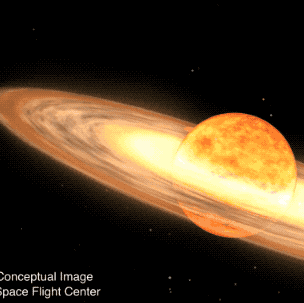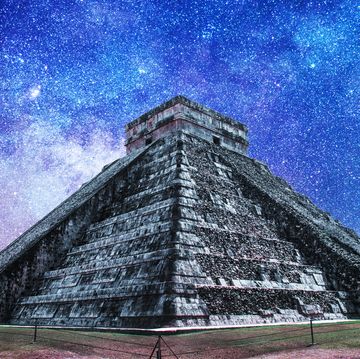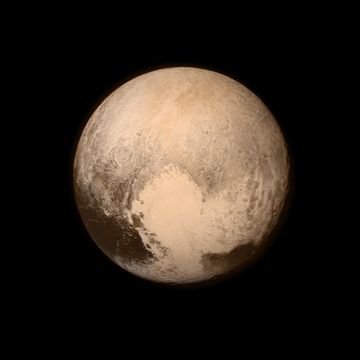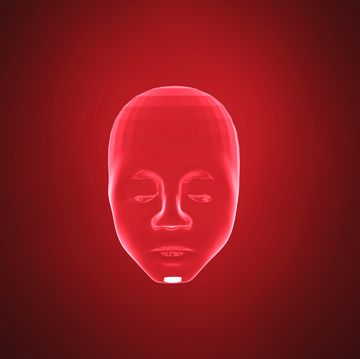It's a machine that could calculate solutions to problems so impossibly time-consuming that even the most powerful supercomputers could never handle them. And it would do so in an instant. This is the quantum computer, made possible by the bizarre nature of quantum mechanics. And though the idea is still in its infancy, it's no fantasy.
Two research teams, at Harvard University and the Max Planck Institute of Quantum Optics in Germany, have just announced that they have independently forged the building blocks for tomorrow's quantum computers. As they published today in the journal Nature (1, 2), the scientists discovered a way to hook up atoms and particles of light to create a new type of switch and logic-gate‚ quantum versions of the connecting structures that link bits of data in modern computers.
Quantum Computers
When you dive down into the circuits, all modern computers are basically the same: a huge collection of data arranged with simple rules. Each piece of data is called a bit and shows just one fragment of information‚ a 0 or a 1. You can think of a bit as a lightbulb that's either shining or not.
But quantum theory‚ the physics that rules the tiny world of atoms and particles‚ tells us that there are certain circumstances in which a piece of matter can be two things at the same time. It's possible to have an atom that's spinning in two opposite directions at once, or even to have your lightbulb both shining and not shining. Items with this wacky dual state are said to be in "superposition." (Physicist Niels Bohr once said, "Those who are not shocked when they first come across quantum theory cannot possibly have understood it." So don't worry if you're confused‚ Bohr was one of the founders of quantum theory.)
The most important catch (there are plenty) is that this superposition state is fragile and possible only for incredibly tiny bits of matter.
But for computers, this very idea poses an interesting prospect. If you could somehow harness this odd state of matter to put individual bits of information into superposition, then suddenly you've packed more data into the tiniest package possible. Your bits can now show a 0, a 1, or a combo of both. This is called a quantum bit, or a qubit. And if qubits were linked together like normal bits are linked in a computer, then you'd have a machine could calculate at insane speeds.
"At this point, very small-scale quantum computers already exist," says Mikhail Lukin, the head of the Harvard research team. "We're able to link, roughly, up to a dozen qubits together. But a major challenge facing this community is scaling these systems up to include more and more qubits."
The problem of adding more qubits, Lukin explains, is tied to the fragility of the superposition state. Unless the entire quantum computer is kept at extremely cold temperatures and free of any interfering particles or other noise, the superposition state will entirely collapse for all the qubits, ruining the computer. What makes this even harder is that today's qubits must be close to one another to be connected, and it takes a massive apparatus of machinery, lab equipment, and lasers to support the superposition state of just a single fleck of matter. That dumps an increasing amount of grit into the system, increasing the chance that the entire quantum computer will fail.
"It's just very difficult to address one qubit without interfering with all the rest of them; to take a laser beam and shine it one particular qubit and not another," says Gerhard Rempe, the head of the Max Planck Institute of Quantum Optics research team. "And if, for example, you want to use 10,000 qubits, well, that's 10,000 lasers you have to worry about."
The Ol' Gate and Switch
The new quantum logic gate and switch unveiled today promise to ameliorate some of these problems. Both use a new method: They harness trapped atoms (in both cases, rubidium) that can transfer information through photons, the particles that make up light. Photons, which can be directed through fiber-optic cable, are the prime candidate for sending information at great distances and keeping qubits apart.
Here is how it works: The scientists trap a heavy rubidium atom between two mirror-like sheets using a laser technique that keeps the atom relatively immobile. The scientists then send a photon straight at this atom sandwich. Normally, the photon would hit the first mirror and bounce right back where it came from. But if the atom is put in a specific energetic state, the photon will go straight through that first mirror, hang out with the atom for a moment, and then exit where it came from. As a going-away present, the photon also has a slight change in polarization. This is pretty much how any switch in a computer works. If something is "on," then one thing happens. If it's "off," then another thing happens.
But here's the tricky part. The scientists can put the rubidium atom in superposition, so that it is simultaneously in that energetic state and not in the energetic state. It's on and off. Because of this, the photon both does and does not enter the mirror, mingle, and gain its polarization change. And the photon, by virtue of having both changed and not changed, carries that superposition information and can bring it to a different atom-based qubit.
A similar process happens with the quantum logic gate. A normal logic gate is just a series of switches set up in a way that together, they perform a logical operation when given multiple inputs. The German team created a quantum version by having multiple photons repeatedly bounce off the mirror-trapped and superpositioned rubidium atom. Then, using another funky attribute of quantum physics called entanglement swapping, the scientists made it so that the photons share the same information. These entangled photons can become the multiple inputs required for any logic gate.
Even with this new advancement, we're still a long way from building large-scale quantum computers, with thousands of qubits linked together. "We're not going to see quantum computers being built for the average American consumer in ten years, or anything like that," says Jeff Thompson, a physicist with the Harvard research team.
Rempe says that while this technology seems promising for solving the qubit-closeness issue, neither team is actually attempting to link multiple qubits. And that endeavor will probably open up a new world of unknowns.
Nonetheless, "It's exciting to see this [photon-based] technology is coming into its own," says Jacob Taylor, a physicist at the University of Maryland who was not involved with the projects. Whatever future difficulties arise, he says, scientists are learning valuable information about one of the most fundamental aspects of physics. Everything we know about quantum mechanics would lead us to believe that large-scale quantum computers should be theoretically possible. But even if "you couldn't build a large-scale quantum computer," he says, "that's somewhat exciting, too. That tells us that our theory of quantum mechanics might be breaking down somewhere, that we still have much to learn."














